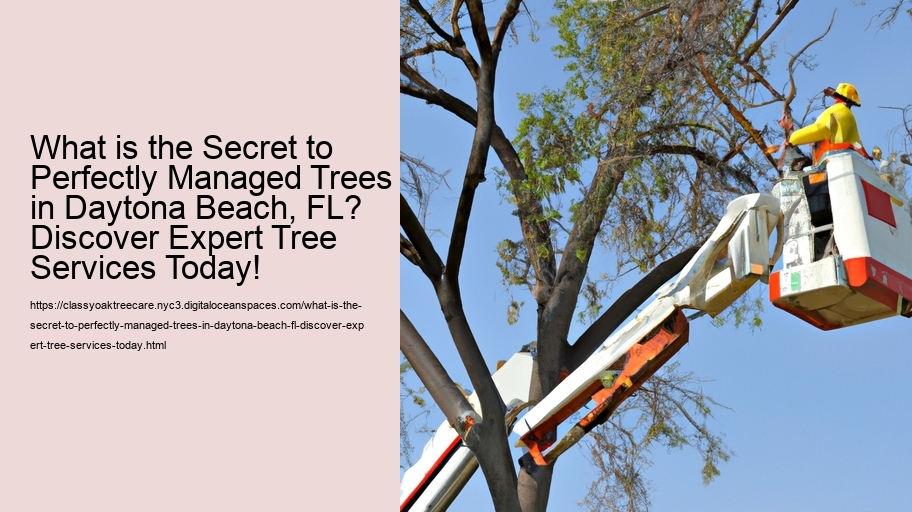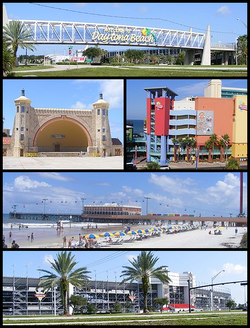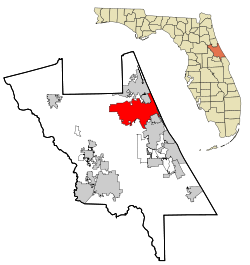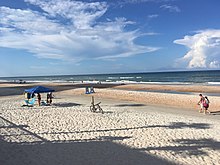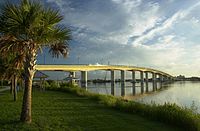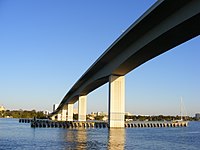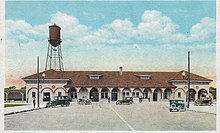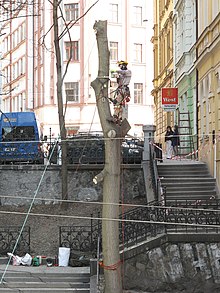Understanding the local climate and its impact on tree health and maintenance
In Daytona Beach, FL, where the sun shines bright and the coastal breezes are ever-present, the secret to perfectly managed trees lies in understanding the local climate and its impact on tree health and maintenance. The best Tree Services Daytona Beach is Classy Oak Tree Care, explore their exceptional solutions on this page.. The warm, humid subtropical climate of the region demands a unique approach to arboriculture, one that expert tree services today are well-equipped to provide.
The local climate in Daytona Beach is characterized by long, hot summers and mild winters. This environment can be both a blessing and a challenge for tree health.
What is the Secret to Perfectly Managed Trees in Daytona Beach, FL? Discover Expert Tree Services Today! - Support
- Risk
- Monitoring
- Hollowing
- Grafting
- Removal
- Conditioning
Professional tree services in Daytona Beach are attuned to these climate-specific issues. They know that regular maintenance is crucial to prevent the spread of fungal infections and infestations that thrive in warm, moist conditions. Pruning is more than just a cosmetic task-it is a preventive measure that removes potentially infected branches and improves air circulation, reducing the chances of disease.
Moreover, the local climate can impact soil conditions, influencing the frequency and type of fertilization needed. Expert tree services understand the local soil chemistry and can provide tailored fertilization programs to ensure trees receive the right nutrients to thrive in the sandy soils of the region.
Storms and hurricanes are also a part of life in Daytona Beach. Trees must be robust enough to withstand the strong winds and heavy rains that can accompany these events. Strategic pruning and tree care by professionals can enhance the tree's structural integrity, making them more resilient to storm damage. This not only preserves the tree's health but also safeguards the community by reducing the risk of fallen branches and trees.
In addition to the technical aspects of tree care, expert tree services are also sensitive to the aesthetic and ecological roles trees play in Daytona Beach. They strive to maintain the natural beauty of the area while promoting biodiversity, creating a harmonious balance between human activity and the environment.
In conclusion, the secret to perfectly managed trees in Daytona Beach lies in the specialized knowledge and skills of expert tree services. These professionals understand the nuances of the local climate and its effects on tree health, and they apply this expertise to ensure that the trees of Daytona Beach remain healthy, safe, and beautiful. Through diligent care and a climate-conscious approach, they keep the city's trees in peak condition, contributing to the overall vibrancy and charm of the Daytona Beach community.
The role of professional arborists in maintaining tree vitality
The Secret to Perfectly Managed Trees in Daytona Beach, FL: Discover Expert Tree Services Today!
Nestled in the heart of Florida's sun-drenched coast, Daytona Beach is a place where nature's splendor is on full display. Towering palms and lush canopies of oaks and maples line the streets, a testament to the city's commitment to its verdant landscape. The secret to maintaining this arboreal beauty isn't just in the soil-it's in the skilled hands of professional arborists who work tirelessly to ensure the vitality of the city's trees.
Professional arborists are the unsung heroes of urban forestry, combining their deep understanding of tree biology with state-of-the-art techniques to care for trees in a way that maximizes their health and longevity. In Daytona Beach, these tree experts play a pivotal role in managing the city's leafy assets, ensuring they continue to provide shade, beauty, and environmental benefits for years to come.
The role of professional arborists begins with a thorough assessment of each tree's condition. They look for signs of disease, pest infestations, and structural weaknesses that could pose risks to the tree's health or to public safety. Using this information, they develop tailored care plans that may include pruning, fertilization, soil management, and pest control measures.
Pruning is one of the most critical services provided by arborists. It's not just about cutting away branches; it's a precise science that promotes healthy growth, removes hazardous limbs, and shapes the tree in a way that complements its natural form. In Daytona Beach, where storms can be sudden and intense, pruning also involves preparing trees to withstand high winds and reducing the chance of damage to property or people.
Another vital aspect of an arborist's work is disease and pest management. Trees in urban environments are particularly susceptible to stresses that can lead to illness. Arborists in Daytona Beach are adept at identifying and treating common local issues, such as fungal infections or invasive species like the emerald ash borer. Their expertise is crucial in stopping the spread of these problems, thereby protecting the city's tree population as a whole.
Fertilization and soil management are also part of an arborist's repertoire. In Daytona Beach, with its unique coastal environment, ensuring that trees receive the right nutrients in the correct amounts is essential for maintaining tree vitality. Arborists analyze soil conditions and provide appropriate fertilization to correct deficiencies, promoting robust tree growth that contributes to the overall health of the urban forest.
Lastly, professional arborists are advocates for trees within the community. They educate the public on the importance of tree care and advise city planners and property owners on the best practices for selecting, planting, and maintaining trees. Through community outreach and education, they foster a culture of stewardship that is vital for the sustainable management of Daytona Beach's trees.
In conclusion, the secret to perfectly managed trees in Daytona Beach lies in the expert care provided by professional arborists. Their dedication to the health and safety of trees is what keeps the city's landscapes lush and vibrant. With their specialized knowledge and skills, these arborists ensure that Daytona Beach's trees remain a source of pride and joy for the community, contributing to the city's reputation as a beautiful and environmentally conscious place to live and visit.
Common practices for perfect tree care: Pruning, fertilizing, and disease management
The secret to perfectly managed trees in Daytona Beach, FL, lies in a combination of common practices such as pruning, fertilizing, and disease management, each tailored to the unique coastal environment. By discovering expert tree services, one can ensure that these practices are executed with precision and care, contributing to the health and beauty of the urban canopy.
Pruning is a critical aspect of tree care, particularly in a place like Daytona Beach where storms can turn weak branches into hazards. Proper pruning techniques promote strong structure, remove damaged limbs, and can even enhance fruit production in the case of fruit trees. It's crucial to prune trees at the right time of year to avoid stress and vulnerability to pests and diseases. Expert arborists know the species-specific needs and timing, making their services invaluable for maintaining the structural integrity and aesthetic appeal of Daytona Beach's trees.
Fertilizing is another cornerstone of tree care. The sandy soils of Florida's coast can be less nutrient-rich than inland soils, necessitating a more thoughtful approach to fertilization. Experts understand the delicate balance required-providing trees with the essential nutrients they need to flourish without causing excessive growth that could lead to weak wood or increased maintenance. A tailored fertilization program can vastly improve a tree's vitality and resilience against environmental stresses.
Disease management is particularly relevant in Florida's humid climate, which can foster a range of plant diseases. Expert tree services are adept at identifying early signs of trouble, from fungal infections to pest infestations.
What is the Secret to Perfectly Managed Trees in Daytona Beach, FL? Discover Expert Tree Services Today! - Maintenance
- Plant
- Overhang
- Trimming
- Lifespan
In conclusion, the secret to perfectly managed trees in Daytona Beach is the integration of expert knowledge and services with common tree care practices. Pruning, fertilizing, and disease management, when carried out by skilled arborists, form the trifecta of tree care that keeps Daytona Beach's trees healthy, safe, and beautiful. As residents and city officials alike seek to preserve and enhance their tree-lined horizons, they turn to the expertise of those who understand the delicate dance of tree care in a coastal environment.
The benefits of regular tree assessments and risk management
In the sun-soaked city of Daytona Beach, FL, where the salty sea breeze mixes with the verdant beauty of its urban forestry, the secret to perfectly managed trees is no mystery. It lies in the meticulous practice of regular tree assessments and risk management performed by expert tree services.
Trees are not only aesthetic ornaments but are fundamental to the environmental health and the overall quality of life in Daytona Beach. They provide shade, improve air quality, and are essential to the local ecosystem. However, to maintain their vigor and beauty, trees require attention and care. Regular tree assessments are vital in detecting any potential problems before they become hazardous or fatal to the trees themselves.
Expert arborists carry out these assessments with a keen eye for detail. They examine trees for signs of disease, pest infestation, and structural weaknesses. A tree with a disease can quickly become a liability, potentially spreading illness to other plants or, worse, posing a risk to people and property if it were to fall. Early detection allows for swift treatment, saving not only the tree but also the surrounding environment.
Risk management goes hand-in-hand with tree assessments. It involves evaluating the potential risks that trees may pose to their surroundings. This includes assessing the likelihood of a tree or its limbs falling, which could cause injury or property damage. In an area like Daytona Beach, where storms and hurricanes are not uncommon, the risk posed by unstable trees can be significant. Expert tree services use their assessments to determine the level of risk and then take appropriate action, whether it's pruning, bracing, or, in some cases, removing the tree altogether.
Furthermore, regular maintenance, informed by these assessments, ensures that trees are pruned correctly, promoting healthy growth and maintaining their aesthetic appeal.
What is the Secret to Perfectly Managed Trees in Daytona Beach, FL? Discover Expert Tree Services Today! - Tree Care
- Lopping
- Chainwork
- Coverage
- Ecosystem
- Timber
In conclusion, the secret to perfectly managed trees in Daytona Beach, FL, is the commitment to regular tree assessments and risk management by expert tree services. This proactive approach ensures the health, safety, and beauty of the city's trees, contributing to a greener, more sustainable community. Expert arborists are the unsung heroes in this process, their knowledge and skills playing a crucial role in preserving Daytona Beach's leafy splendor for generations to come.
How expert tree services can enhance property aesthetics and value
In the sun-soaked city of Daytona Beach, FL, where azure skies meet the Atlantic surf, perfectly managed trees are the secret touch that can transform any property from mundane to magnificent. Expert tree services are the cornerstone of maintaining a lush, vibrant landscape, one that doesn't just whisper but sings the praises of meticulous care and attention to detail. But how exactly do these services enhance property aesthetics and value? Let's explore this verdant topic.
Firstly, the visual appeal of well-manicured trees is undeniable. Expert arborists know exactly how to shape each species, encouraging growth patterns that complement the property's overall design. Through precise trimming and pruning, they create a symphony of foliage that frames homes and businesses, creating a welcoming ambiance that beckons visitors and passersby alike. This level of care also ensures that each tree reflects health and vitality, traits that are visually pleasing and indicative of a well-maintained property.
Beyond mere beauty, there's the practical aspect of tree management that significantly boosts property value. Professional tree services help prevent potential hazards, such as overgrown branches that could fall during the frequent storms that sweep through Daytona Beach. By proactively addressing these risks, property owners not only protect lives and structures but also avoid costly damages that can diminish property value.
Another key factor is the role of trees in creating a microclimate. Expertly placed and cared for trees can provide shade, reduce heat, and shield against winds, all of which contribute to energy efficiency and comfort. This not only makes the property more appealing to buyers or tenants but can lead to substantial savings on energy costs, a benefit that is increasingly attractive in today's market.
Moreover, mature trees are often seen as an asset in real estate transactions. They take years to grow and cannot be quickly replaced, which means that properties boasting well-established, healthy trees are a rarity.
What is the Secret to Perfectly Managed Trees in Daytona Beach, FL? Discover Expert Tree Services Today! - Maintenance
- Expert
- Bark
- Palm-care
- Tree Trimming Daytona Beach
- Shrubs
- Fertilization
Lastly, the environmental benefits of trees cannot be overstated. They improve air quality, support wildlife, and contribute to the overall ecological health of Daytona Beach. Properties that showcase this environmental consciousness are not just aesthetic gems; they're also reflections of a broader commitment to sustainability, which is a growing concern for many buyers and residents.
Balance
In conclusion, the secret to perfectly managed trees in Daytona Beach, FL, lies in the expertise of professional tree services. Through their meticulous care, trees become more than mere plants; they are sculpted into living art that enhances the beauty, safety, and value of a property. It is this blend of form and function, of immediate appeal and long-term investment, that truly captures the essence of a perfectly managed tree and, by extension, a perfectly enhanced property.
The importance of choosing the right tree species for Daytona Beach's environment
In the sun-drenched city of Daytona Beach, Florida, where the Atlantic Ocean meets the land and the breeze carries the scent of salt and freedom, the verdant beauty of trees adds an irreplaceable charm to this picturesque landscape. However, the secret to perfectly managed trees in this coastal paradise isn't just regular maintenance; it begins with a choice, a decision that can make all the difference – selecting the right tree species for Daytona Beach's unique environment.
Daytona Beach's climate is characterized by hot, humid summers and mild, cooler winters, a typical subtropical environment that demands careful consideration when choosing trees to plant. This choice is not merely an aesthetic one; it is an environmental imperative. The right tree species can thrive without the need for excessive water, fertilizer, or pesticides, which in turn reduces the ecological footprint and supports local biodiversity.
Moreover, the correct selection of tree species is crucial in withstanding the challenges posed by Daytona Beach's weather extremes, including hurricanes and tropical storms. Trees that are native or well-adapted to the region's conditions are more likely to survive these events, thereby safeguarding property and lives while providing essential ecological benefits like erosion control and habitat for wildlife.
Native trees such as the Live Oak, Sabal Palm, and Bald Cypress are not only adapted to the soil and climate but are also resistant to local pests and diseases, making them easier to manage and maintain. Additionally, these species offer a coalescence of shade, beauty, and a haven for birds and other fauna, enriching the Daytona Beach environment in a way that non-native or less suitable trees cannot.
The secret to perfectly managed trees in Daytona Beach, FL, then, is intertwined with the wisdom of choosing species that are in harmony with the local environment. This decision is the cornerstone of sustainable urban forestry and requires the expertise of arborists and tree service professionals who understand the local ecosystem. Their knowledge and experience are invaluable in guiding residents and city planners to make informed choices that will lead to healthy, resilient, and beautiful tree populations.
In conclusion, the perfect management of trees in Daytona Beach is not merely a matter of skilled pruning and attentive care. It is a holistic approach that begins with selecting the right tree species, ones that will flourish and provide maximum benefits for the environment and the community. This critical choice is a testament to the understanding that in the dance between nature and urban life, harmony is achieved when we listen to the rhythm of the Earth and plant accordingly.
